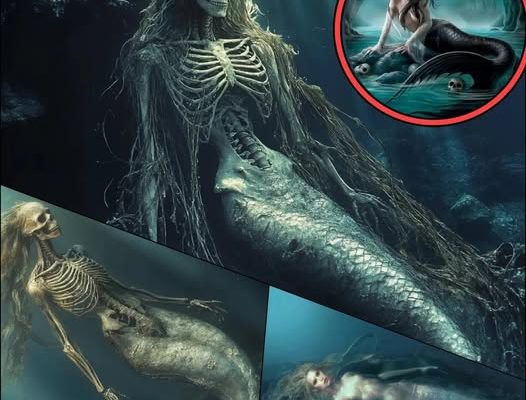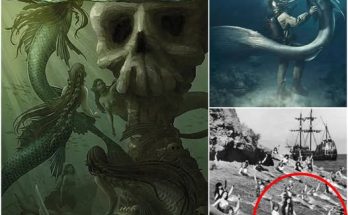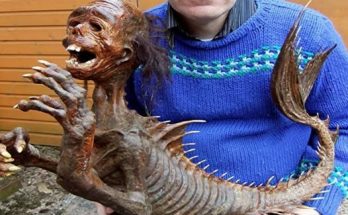In a discovery that has left the scientific community breathless, a team of marine archaeologists has revealed what could be the first fossil of a mermaid, a mythical creature that for centuries has inhabited the legends of various cultures around the world. This discovery, made in a remote and virtually unexplored part of the ocean, not only challenges traditional beliefs about evolution and biology, but also opens a new chapter in understanding our history.

The fossil, discovered at a depth of more than 3,000 meters, was in an exceptional state of conservation. The first images show a humanoid figure with an elongated tail covered in scales that appear to have withstood the test of time. Its humanoid skeleton presents anatomical characteristics that defy any known classification in modern biology.
The discovery was made during an underwater expedition funded by an international consortium of researchers. The team, using cutting-edge technology such as underwater robots and three-dimensional scanning systems, managed to locate and extract the fossil without causing damage to its structure. This technical achievement allows study of the creature to continue uninterrupted.

The discovery has generated a wave of debate in the scientific community. While some researchers argue that it could be an unknown marine species with human-like traits, others point out that the fossil’s characteristics are too precise to be a coincidence.
The main controversy lies in the mixture of biological and morphological elements that seem to combine the human with the aquatic. “We have never seen anything like this,” said Dr. Miguel Ramírez, a bioarchaeologist at the International University of Marine Sciences. “Initial evidence suggests that this creature lived in a hybrid environment, both in water and on land, but its structure defies all existing categories.”

The find has also revived interest in mermaid legends that exist in cultures around the world, from classical Greek stories to folklore tales of Pacific peoples. This discovery raises fundamental questions: Are legends an echo of real events forgotten in time? Could this creature be the source of those stories?
Initial analyses, including carbon dating and DNA studies, suggest the fossil is at least 10,000 years old. This places it in a period when human civilization was beginning to develop, opening up the possibility that early humans may have had encounters with these creatures.

The scientific team has already announced plans to carry out more comprehensive studies, including a full molecular scan and digital three-dimensional reconstructions. These efforts could offer crucial information about the habitat, life patterns, and possible extinction of this creature.
Although there is still much to investigate, one thing is certain: this discovery promises to challenge and expand the boundaries of our understanding of the natural world and human history.





